Road Trips by a Family of Four – Grandparents, Mom, Teenage Daughter
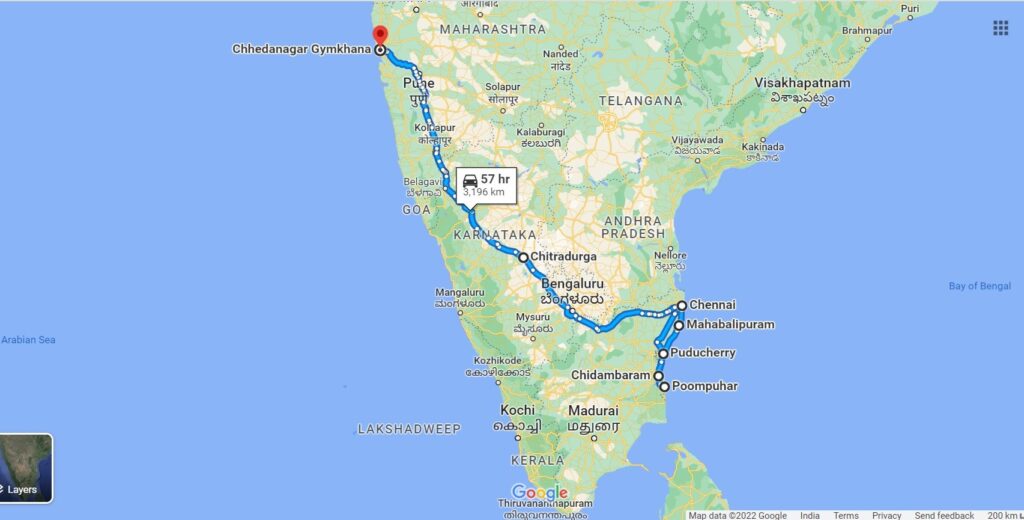
Our first long road-trip – around 3300 kms from our home in Mumbai on the beautiful Golden Quadrilateral (NH48) to Chennai via Chitradurga – followed by Mahabalipuram, Pondicherry, Chidambaram, Poompuhar and back via the same route. We were visiting the South after more than 2 decades, and this was to be a short, experimental road trip. After a lot of doubts on whether it would be feasible, we started out excitedly with our driver at 4am on a Saturday morning, 19th December, 2015. We sped out of the city that was still sleeping on that dark foggy morning, each one silent and apprehensive, but expectant too. After paying toll at the toll gate (Fastag stickers were not introduced then) we stopped at the still dark food court on the Mumbai-Pune expressway for a hot cup of tea, the only stall open that early in the morning. After visiting the washrooms, we continued our journey with pit stops for breakfast at Kamat’s and lunch at Kamat Upachar at Sira, in Karnataka.
South1-Road-Trip-Detailed Schedule
Our road trips could not have been planned successfully without immense help by way of data and information from the internet. I have read through hundreds of posts on hotels, food, petrol pumps, washrooms, routes, road conditions, by-passes, weather, places of interest, history, car servicing, distances, hours of travel, overnight stays, opening and closing timings of monuments / temples, conveniences for senior citizens and many more. A lot of my planning was based on inputs from people who have generously shared their experiences. I hope to give back with gratitude in these blog posts.
Thank you Team BHP for your website. Road trips were new to me initially, but reading your posts gave me the confidence we could do it too.
Road trips with 2 senior citizens and a child With parents in their 70s and 80s, self in my 50s and my daughter, moving annually from 8 to 15, we are quite a motley group age-wise. The key to a successful road trip, for us, has been good planning. The proposal for the next road trip is made to the team at least 6 months in advance. Amma’s first reaction is usually skeptical (can we do this?) and rightly so, being a cancer survivor and in her 70s. Appa, from whom we imbibed the love of travel, would ask for a plan. So I would pull out road maps (the ones from TTK are superb), draw up an Excel sheet and plan our route. The detailed schedule included names of hotels we would stay in during our trip. The four of us stayed in 2 rooms adjacent to each other, which later became 1 when Amma succumbed to the Big C at 78, after having done 6 trips together. She is still with us of course, in spirit and in frame, smiling from the desk of every hotel room we visit. I would draw out the route on the map and once the plan was ready, give a presentation to the family seated around our dining table. Their questions included number of hours of travel at a stretch, nature breaks, food breaks, hotel convenience and comfort, clothing, number of tolls, road condition etc. for all of which I had to have suitable answers. Amma managed the expenses at home so her main concern was affordability. They would also recommend places to see additionally. Once given the Go Ahead, I proceeded with hotel bookings, which were in place at least 2-3 months prior our date of departure. For some, this may seem too much in advance, but with aged parents and a young child, I could take no chances. Early bookings ensured we got the best places and most suitable rooms for stay, closest to the places we wished to visit. And from then on, for Amma and Appa, the daily walks, regular rest and simple diet took on a new meaning to ensure they were fit and ready for the two-week haul. My daughter, always happy to be traveling, loved her annual birthday gift. She and her grandmother celebrated their birthdays in the same month with a road trip in December.
After 13 hours on the road, we reached Chitradurga in Karnataka. One takes a turn to the right from the national highway after seeing the large, decorative arch welcoming you there. Chitradurga is famous for its 15th-century fort, known as Kallina Kote or Stone Fortress. After winding through narrow lanes, we reached our lovely guest house, KSTDC’s Mayura Yatri Niwas, walking distance from the fort entrance.
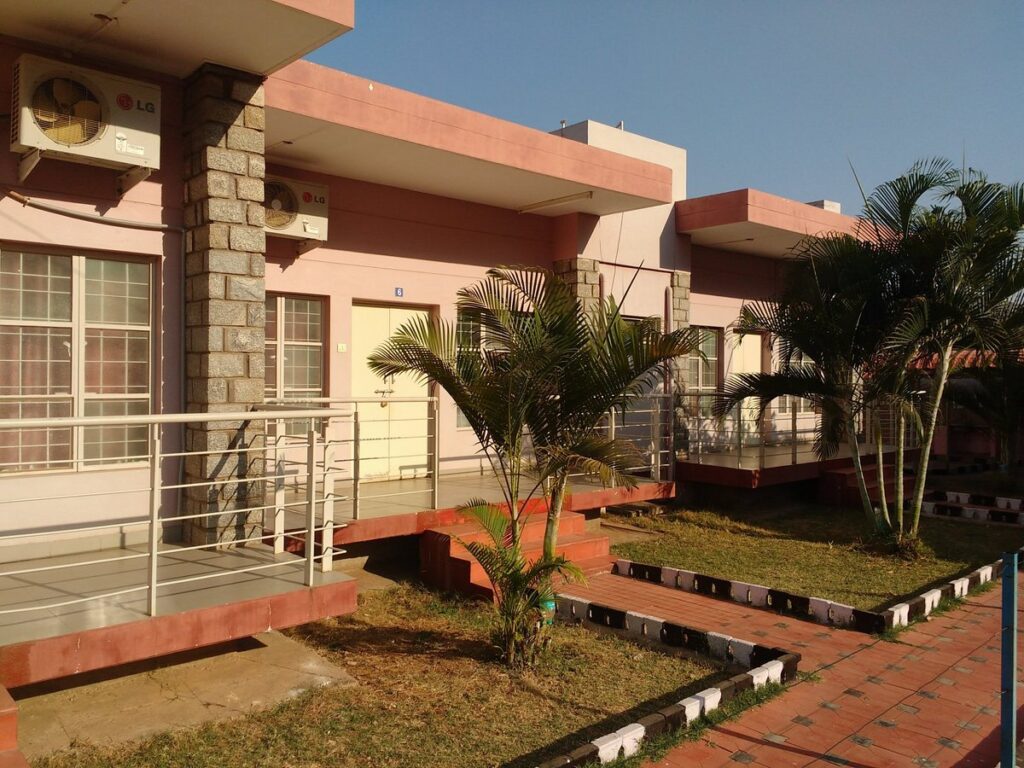
My daughter, then 8, was agog seeing the huge boulders strewn in the landscape as she had heard the story of the great fight between the Pandava Bheema and the rakshasa Hidimba. The two had battled each other at Chitradurga with uprooted trees and boulders, with Bheema finally killing the demon and marrying his sister, Hidimbi. Their son Ghatotkacha, who was killed in the Kurukshetra war by Karna’s divine Shakti weapon given to him by Lord Indra, was said to have been born here.
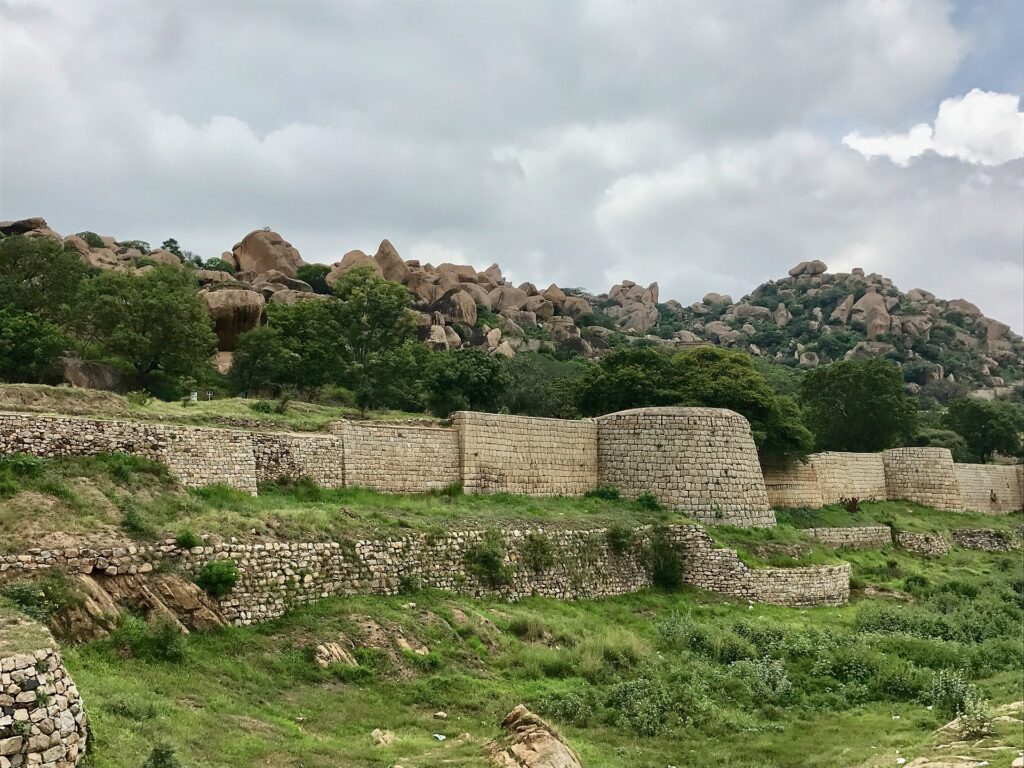
Chitradurga is also famous for its fort where Obavva, the wife of a guard to the fort of the Nayakkas, single-handedly clubbed to death hundreds of the enemy, Hyder Ali’s soldiers, one-by-one as they exited a hole into the fort.
Fascinated by the story, my daughter spent her time standing outside staring at the very same hill from the Onake Obavva story, our guesthouse being directly at the foot hills of the fort.
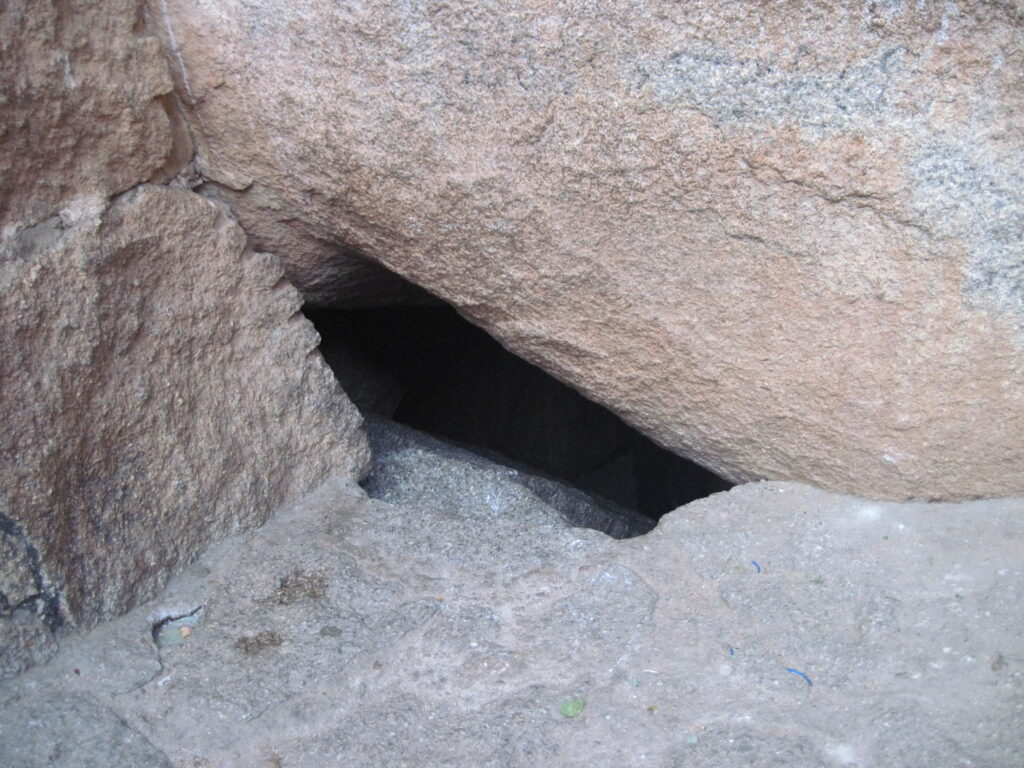
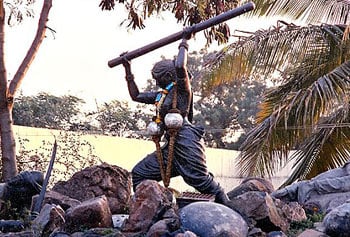
We would have loved to climb the fort, but our stay there was too short. The Mayura Yatri Niwas was relaxing and peaceful. We occupied 2 rooms with entrances and balconies facing the fort – a lovely view. The food was simple and tasty. The rooms too were basic. The service was exemplary, and we were glad we would halt there again for a night on our return journey.
Restaurants and washrooms enroute We always looked for restaurants that had many vehicles parked outside. This assured us the food would be fresh and hot. We adhered to this rule so strictly that there have been many occasions when we have had lunch at 3pm or 4pm or missed it altogether. It is also wise to have simple food like dal, rice, roti and bhaji, khichdi for meals while travelling. Well- balanced meals like the local thalis are great too. We usually had South Indian breakfasts like idli, medu wada, dosa or upma as they were light and nourishing. The more elaborate, exotic meals were reserved for during hotel stays. Amma and Appa had coffees and teas always taken with less or no sugar. We kept to a maximum of 3 meals a day with dinner being early and light. Most of the junk food and fruit drinks we carried with us like chips, wafers and biscuits usually came back home, unopened. Even my daughter avoided them after a point, brought up as she was on her grandmother’s home-cooked meals. Amma’s thenkuzals and thattais of course, were devoured enthusiastically, along with the dry fruits.
As we drank plenty of water to remain hydrated, visiting washrooms at least 3 to 4 times during an 8-hour drive was a must. While in the hotel, we would all have a glass of warm water the first thing every morning followed by a cup of hot coffee to ensure smooth bowel movement along with our bath. While on the road, other than highway restaurants with attached washrooms, we discovered that petrol pumps also offered washroom service. They were usually clean and sometimes locked from the outside and one could request the obliging attendants to open them. Thus, we managed to avoid both: stopping on the roadside as well as holding back. There were exceptions of course, especially when entering crowded cities after sunset and when locating the hotel took time.
After an early morning breakfast and coffee, we left on the 553 km, 10 ½ hour long journey to Chennai (that I still like to call Madras). Roads in the South are well paved, beautiful and scenic, especially after the rains. Green shrubs, fields and trees on either side. Flat-roofed, low-slung houses in hues of pinks, blues, greens and whites. Tractors with loads of sugarcane slowly passing by and rows and rows of giant windmills turning lazily under the sun. One could also spot several structures with solar panels on their roofs. As we sped past signposts with familiar names, Appa would recall their greatness and contribution – Belgaum, Hubli, Dharwad (home to great Hindustani Classical singers including Kumar Gandharva, Gangubai Hangal and Bhimsen Joshi), Tumkur, Hosur, Vellore…
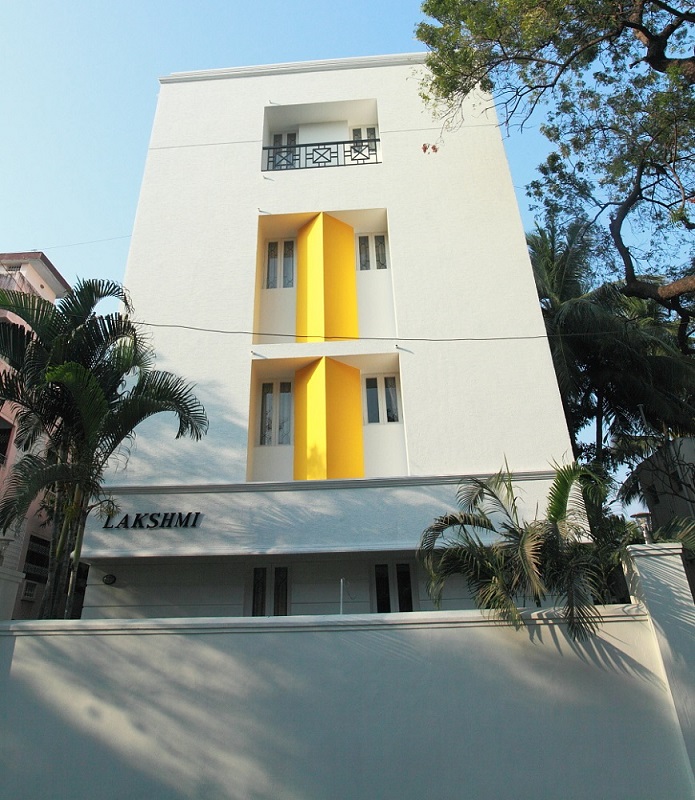
We reached Lakshmi Nest, our guest house in Chennai, at 9:45pm. It was lovely, well-maintained, and tucked in-between residences in Adayar. Comfortable rooms with in-house breakfast. Other meals could be procured for you. We had a late dinner and left after breakfast for Pondicherry via Mahabalipuram. We would return to the same guest house on our journey back and stay on for a day to meet with old friends.
Chennai and the Coromandel coast was still recovering from the unusually heavy rainfall generated by the northeast monsoon (and attributed to the El Niño event) that resulted in the reported deaths of over 500 and the displacement of over 18 lakh people. My 8-year-old diligently wove with loom bands a number of colourful bracelets, rings and ear-rings and carried them with her for all the affected children she hoped she would meet, in order to make them happy and smile.
Another lovely drive on the East-Coast road to Mahabalipuram (now Mamallapuram) to see the famous shore temple. We covered the 56km distance in an hour or so. One of the oldest stone structures in India (around 725 AD) built by the Pallava dynasty of kings, the magnificent temple overlooked the shore of the Bay of Bengal. We wondered around the temple and shrines. The main shore temple had vertically steep stone-cut steps. Amma sat on each step and supported herself with her hands to climb down. Appa, on the other hand, tried to step down on his own and, mis-judging the depth, fell headlong towards the bottom. Fortunately, he tumbled over my daughter who was skipping ahead, and she broke his fall. She wasn’t injured but Appa received a cut below his eye that bled profusely. We rushed him to the nearest doctor who treated his wound and gave him an injection. My daughter, who was crying, more with shock than with hurt, was comforted with beautiful sea shells we bought at the site.
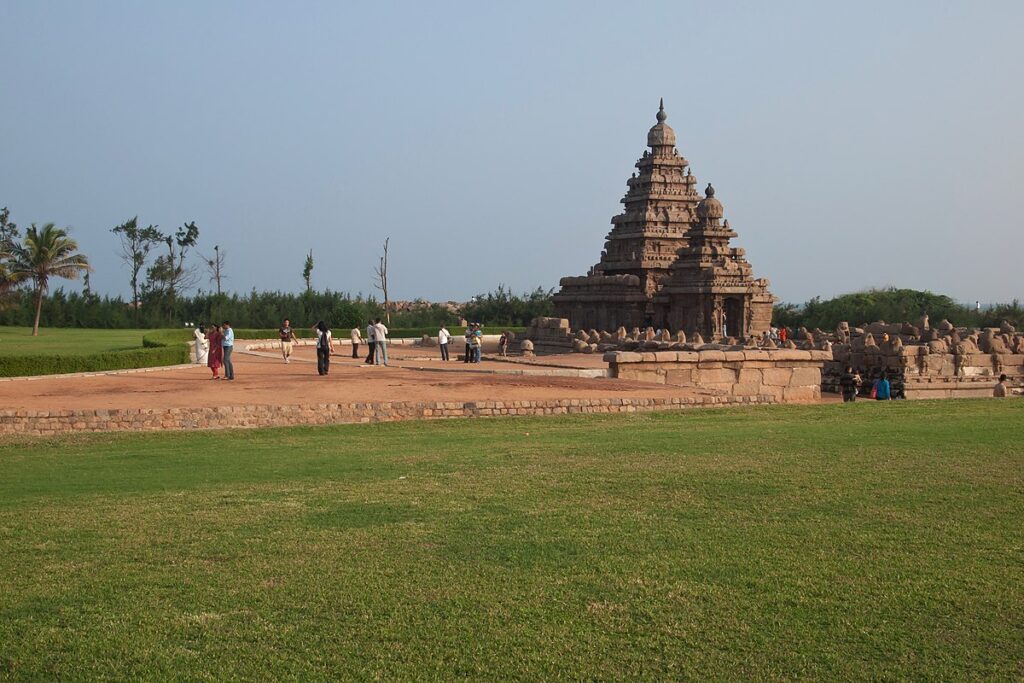

Travel in comfort during those long hours Appa always sat in the front with the driver. We placed a cushion for his back, and he would recline in his seat, stretch his legs and nod off to sleep. He would wear a light sweater and spread his jacket over his legs for warmth, as the air conditioner was always on. Amma sat behind with us, two cushions in a line, one above the other, for the whole length of her back. She would cover herself with her saree pallu and sometimes a shawl. My daughter’s favourite position was with her head on her grandmother’s lap and her feet on mine. As she grew taller, she would lie with her head on the arm rest between the two front seats and stretch herself across between Amma and I with her crossed feet sticking out above our heads. She always carried a Turkish towel bathrobe that served as blanket for her. I was seated near the left window, as was Amma near the right. There were adequate sun screens for the windows, that were put up when required and kept the vehicle cool. Plenty of leg room, comfortable seats – all very cozy indeed.
After our little adventure, we continued our drive along the beautiful East-Coast road to Pondicherry, the Bay-of-Bengal playing hide and seek between palm trees. Our stay was at Anandha Inn, a large hotel in the Tamil Quarter or Black Town, 1km from the promenade and the bay. Anandha Inn was a lovely hotel with warm and hospitable staff. The food was delicious, and our family suite was spacious and warm. The same evening, I took Appa to a clinic nearby (recommended by the hotel staff) and got his cut stitched and medicated by the good doctor there. Appa recovered swiftly and now one can hardly see the scar.
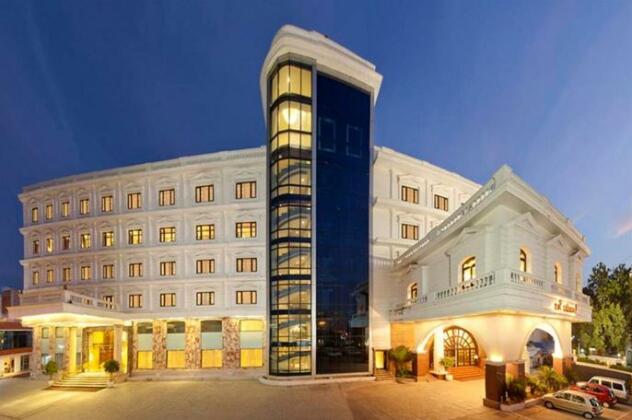
We went for a long walk that evening. The promenade was a beautiful 1.5 km walk-way on the coastline of the Union Territory. It was adjacent to the rock beach with the great Bay of Bengal shimmering under the sky, by day and moonlight, and was perfect for walking, jogging or just sitting and staring at the distance. Vehicles were not allowed in this area and all parking happened near the entrance to the promenade. It was beautifully maintained. We walked the length leisurely and stopped at a pan-Asian restaurant for a lovely dinner.
The next morning, we visited the Manakula Vinayagar temple. The temple was beautifully decorated with bright, colourful scenes from Hindu mythology on the ceilings and walls. The whole atmosphere was relaxed, and we were filled with serenity and gratitude. Lakshmi the elephant waited patiently outside. My daughter stood in front of her, a little frightened but still wanting a pat on her head. After collecting a coin from trembling fingers, the temple elephant blessed her with her trunk and my little daughter’s joy knew no bounds.
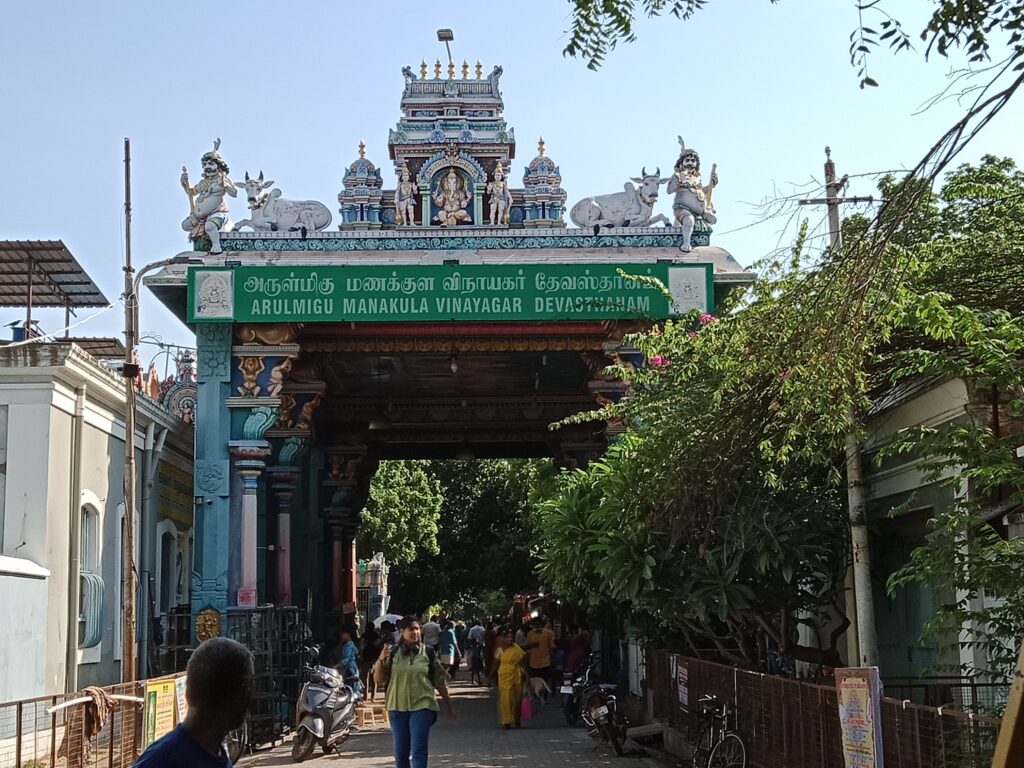
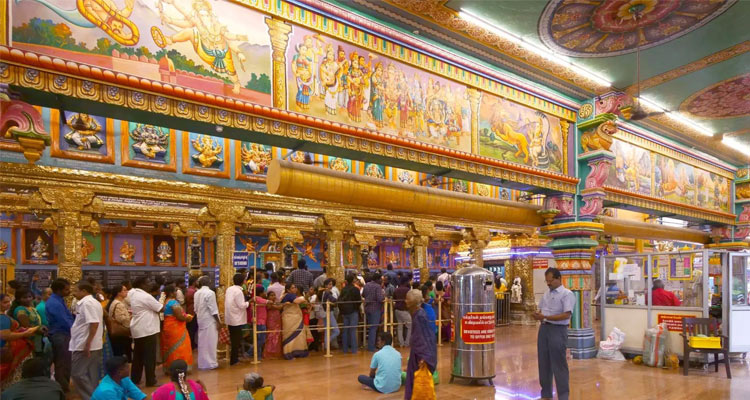
We visited Auroville, a 10km drive from our hotel. It was interesting to note that Auroville fell in the Viluppuram district of Tamil Nadu and not in Pondicherry, as I always assumed. We walked from the parking area via lovely wooded paths to the point where we could get a clear view of the Matrimandir, a yoga and meditation centre open to community members. The way was strewn with colourful pebbles that my daughter collected (even though we told her it was not allowed). After a relaxing lunch at the restaurant, we shopped sparingly at the lovely, but expensive boutiques. Back at the hotel, Amma and Appa relaxed in the room and my daughter and I roamed the streets of Pondy, shopping for dresses, skirts, beautiful linen shirts and leather bags for the whole family. My daughter got a beautiful hand-made doll with pink hair from La Boutique Auroville. She named her Kalki. She slurped on a huge ice-cream cone as we walked.
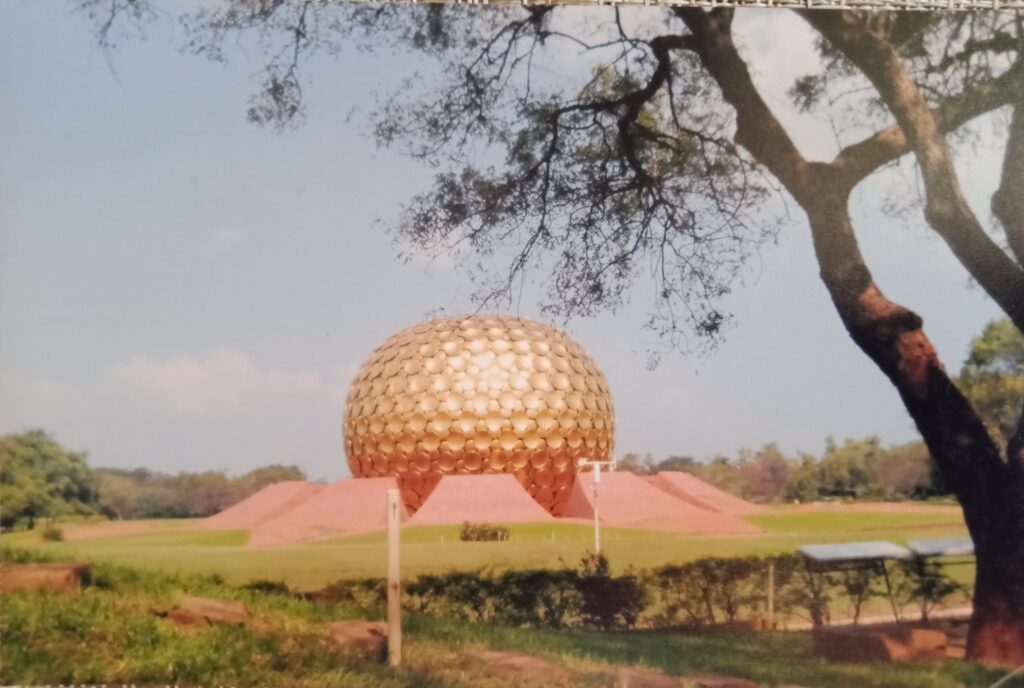
Since we had the time, Appa suggested we visit Chidambaram and Poompuhar the next day. Chidambaram was around 1 ½ hours from Pondicherry, 65 kms on NH32. This beautiful temple town had seen a host of rulers from the South including the Pallavas and the Cholas and was home to the gorgeous Thillai Nataraja temple. Shiva danced the thandava here and one can see the 108 karanas or dance movements sculpted on the gopurams. The legendary Bharatnatyam dancer Padma Subrahmanyam had performed the 108 karanas and her mesmeric movements can be viewed on YouTube. Shiva resides here as ‘ether’ or air and if one glimpses into the sanctum sanctorum through a small opening you will see…. nothing. We were allowed to peek. Appa (as were all men entering the temple) was required to remove his shirt, and his poonal, the sacred thread worn by brahmin men, granted us some privileges. There is of course a lingam that is worshipped by all.
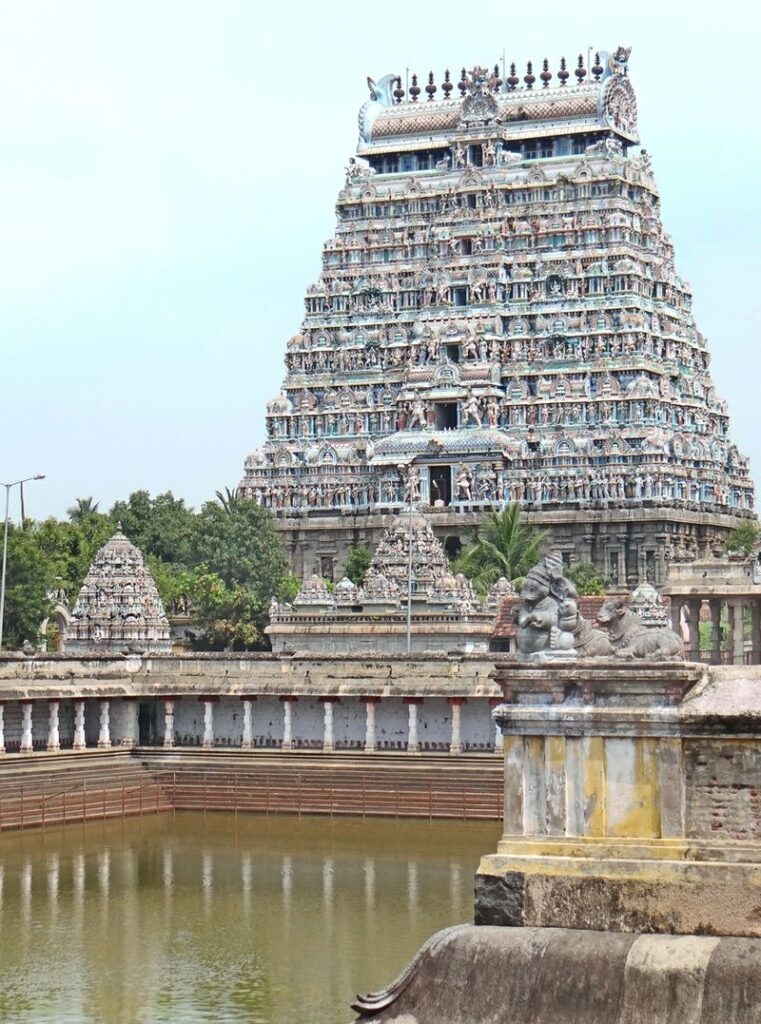
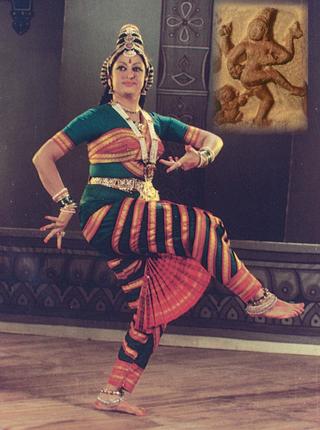
Another hour’s drive took us to Poompuhar, where the holy Kaveri met the Bay of Bengal. We stood on the left bank and saw the river flow into the sea. It was an awesome experience. The bank was slushy, and the locals said one could get stuck in the mud and be washed away when the river rose. Poompuhar was also famous for the legend of Kannagi, the devoted wife of Kovalan. The story goes in the Tamil epic Silapathikaram, that Kovalan left her for the courtesan Madhavi soon after their wedding. After losing his entire wealth to her, he returned repentant to Kannagi. He was later unjustly accused of stealing the Queen’s anklet and put to death without trial by the reigning Pandiyan King. Chaste Kannagi proved his innocence in court and burned down the whole of Madurai in anger.
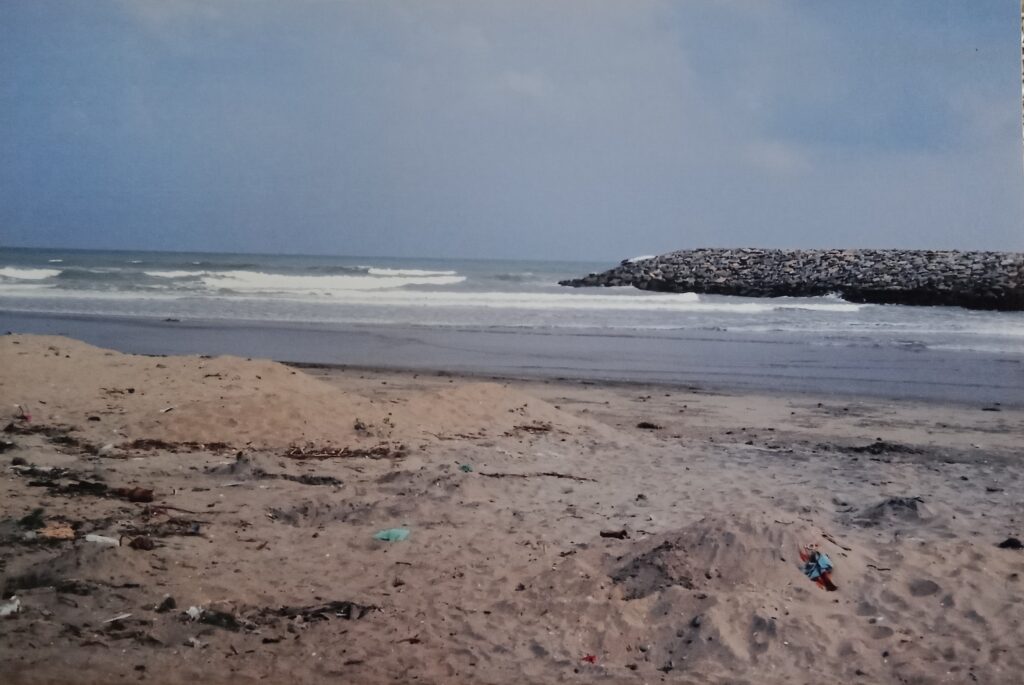
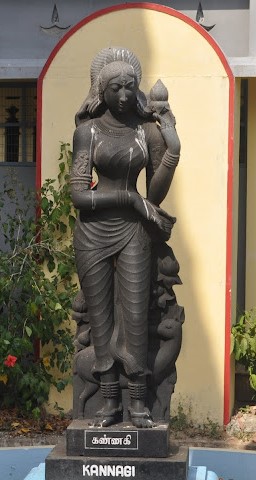
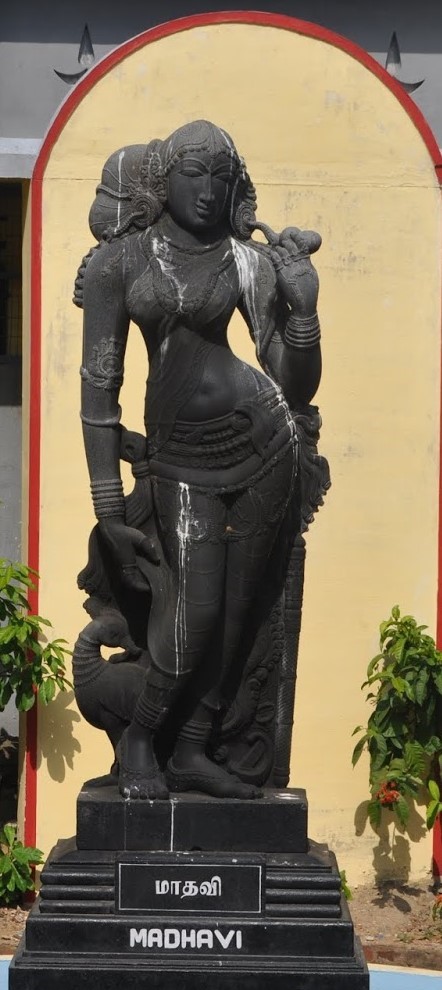
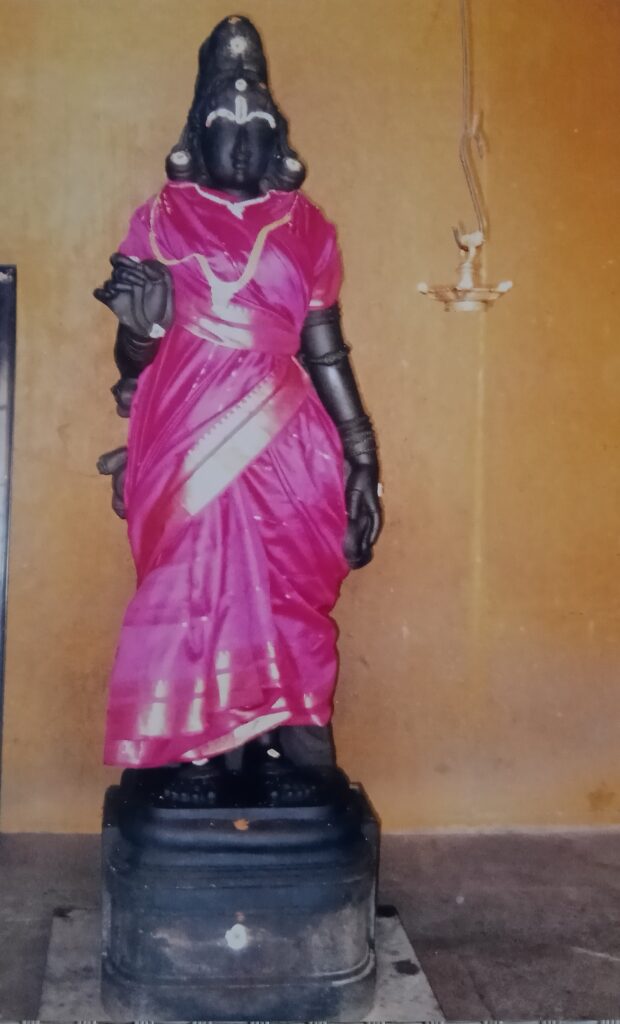
We visited a temple dedicated to Kannagi in the town school (the teachers kindly opened the shrine for us) and also visited the Silapathikaram Art Gallery where the whole epic is depicted on blocks of stone. There were also two lovely carvings in stone of Kannagi and Madhavi. Amma, happy to be seeing all this, sang a ditty from an old tamil play where Kovalan sang “Mātavi yō kaṇṇaki yō vantāntu yār aṭi yō, mātavi āṉāl matimēl vā kaṇṇaki āṉāl kaṭantu pō!”
Happy and content, we drove back to our hotel in Pondicherry.
The drive back to Chennai the next morning after a sumptuous breakfast and coffee saw us stop at Vandalur zoo enroute. The Arignar Anna Zoological Park or Vandalur zoo is a two-hour drive from Pondicherry. My daughter was thrilled with the lion ‘safari’. She could also spot several animals during a ride in an open four-wheeler. Since the park was huge, the rides proved convenient for senior citizens and children alike. We all had a wonderful time, especially watching our 8-year old’s excitement.
Back in Chennai we met up with my old school friend and her family and spent our day with them, lunching, shopping for sarees and bhakshanams and sharing news. We also visited the Annai Velankanni Shrine near Besant Nagar late in the evening and lit candles for our loved ones. Our Lady’s face was wonderfully calm and serene and we felt blessed to have seen her. Wonderful memories.
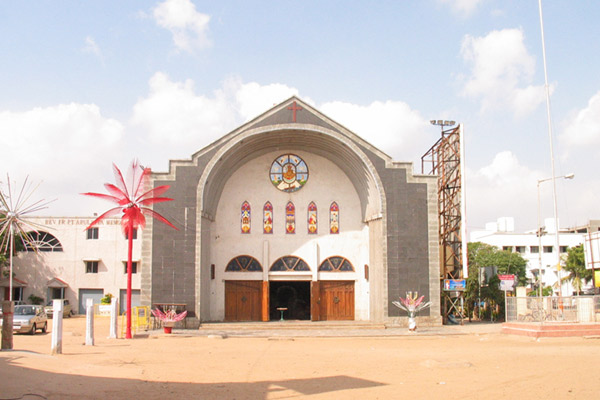
From Chennai we drove to Chitradurga and the next day to Mumbai via Kolhapur. Amma wanted to visit the Mahalakshmi temple there. So we bought lotuses for the goddess and stood in queue to get her blessings.
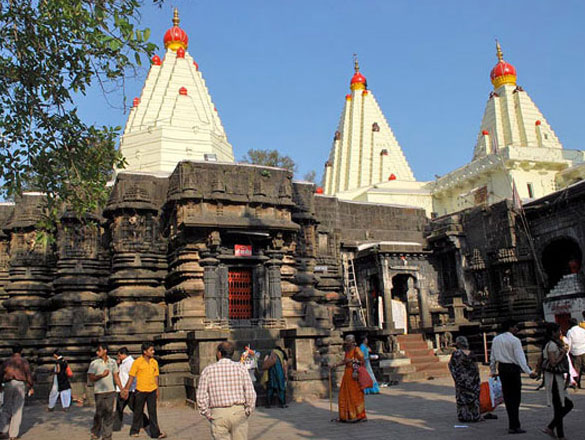
The story goes that Lord Vishnu and his consort Goddess Mahalakshmi had a tiff and she walked out on him, living in disguise in Kolhapur. The Lord came searching for her in vain. During his search, he met and fell in love with Padmavathi in Tirupati. As her marriage dowry, Padmavathi’s father demanded a huge sum that only Kubera could afford to lend to the Lord. In order to repay the debt to Kubera, Venkateshwara stayed on in the hills of Tirupati. And his debt is still being repaid by the Lord’s devotees at Tirupati. Meanwhile, his consort continued to pout in Kolhapur.
We were back home in Mumbai in the evening. The long drives, instead of being exhausting, rejuvenated us. Appa went to the Ganesha temple the next day and broke a coconut as an offering of gratitude for a safe trip.
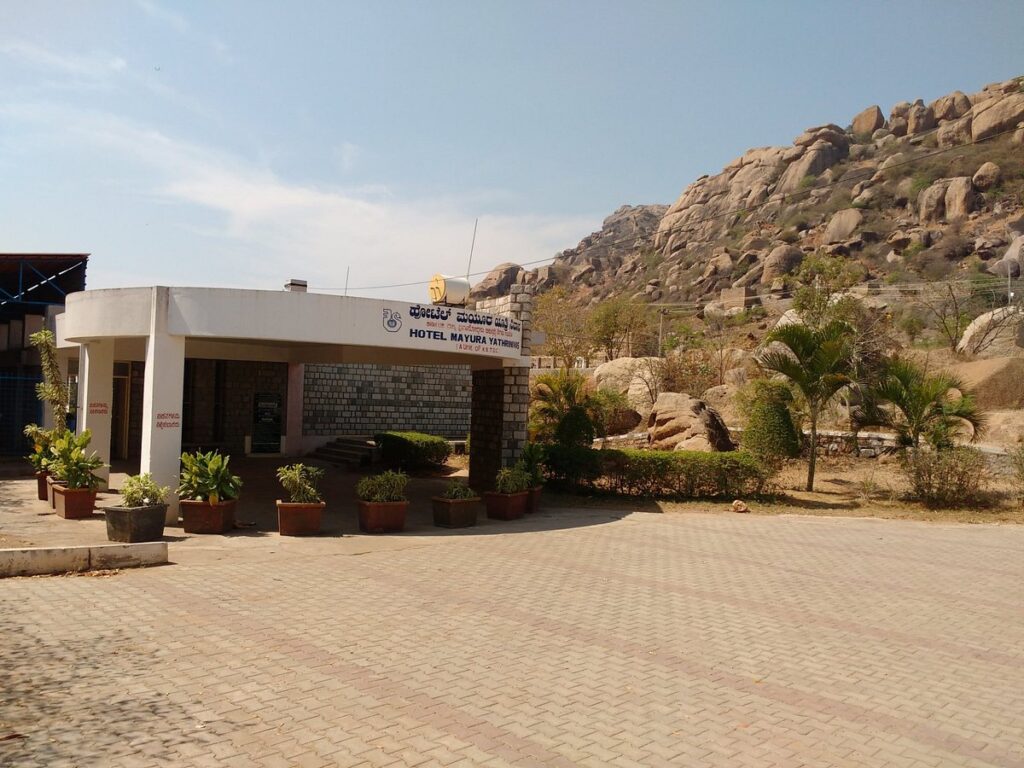
Leave a Reply